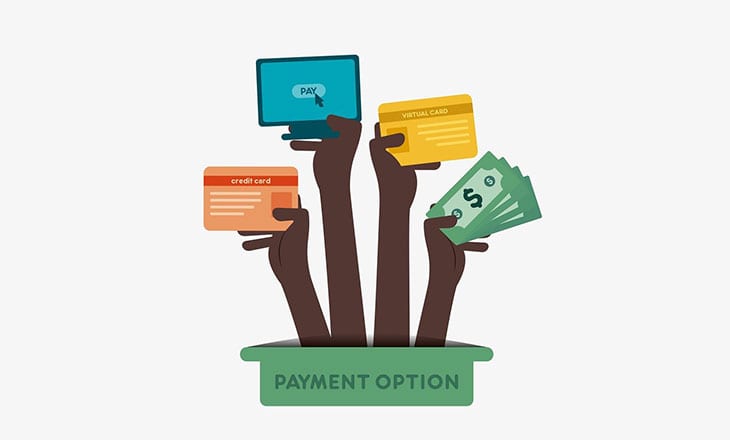Security overtakes reliability and cost in payments decision-making process thanks to rise in emerging payment methods
More than half (52%) of online small to medium sized businesses (SMBs) worry that the move to frictionless payments, such as transactions that take place behind the scenes in apps, is leaving them more open to fraud and will negatively impact revenues according to a new report from the global payments provider Paysafe. This concern is heightened by the fact that 74% feel they are being more aggressively targeted by fraudsters now compared to a year ago and 55% consider card fraud an increasing challenge.
These concerns mean SMBs across the globe now view security as the most important factor when considering their eCommerce setup. Security (59%) ranks above reliability (49%), cost (47%) and ease of transactions including refunds (40%). SMBs are also wary that these concerns may hamper the buyer journey for consumers. Over half (69%) believe that longer verification processes during the payment stage – which could potentially combat these issues – runs the risk of losing consumers, and 70% admit they don’t know how to balance security with an acceptable customer experience, highlighting the trade-off faced by online merchants.
Buying into a fragmented payments landscape
Paysafe’s latest research report, entitled Lost in Transaction: The Future of Payments for SMBs, is an international research report investigating the attitudes of small and medium online businesses in the UK, US, Canadian, German and Austria to the evolution of payment types. It also incorporates further insights from offline, brick-and-mortar merchants in North America.
Abandoned transactions are also posing a problem, with 11% of purchases not being completed. Yet, while 25% believe this reflects successful fraud checks, 41% say abandoned transactions have a major impact on business performance. Notably, 21% believe purchases are abandoned purely because of a lack of payment options at the checkout phase.
When it comes to which payment options to offer, 75% believe offering multiple choices is essential, while 83% plan to introduce new payment methods in the next two years. Credit cards and debit cards (offered by 84% and 73% of online merchants respectively) remain relatively ubiquitous, while 43% of merchants currently accept digital wallets, with a further 17% looking to adopt them over the next 24 months. Meanwhile, 67% believe accepting prepaid cards gives access to new customers, and 45% say they will offer online cash replacements in response to consumer demand, and to service the unbanked, in the next two years. One method with the greatest anticipated gains is mobile apps, with 41% planning to offer them in the next two years, up from 19% currently.
More innovative forms of payment
But merchants are also taking notice of macro consumer trends. 64% agree that consumers want more innovative ways to get short-term credit, as evidenced by the recent rise of ‘Pay Later’ style products which give consumers more flexibility. They also appear to be conscious of ‘proactive innovation’ – a surprising 40% of North American SMBs say they will be capable of delivering Amazon Go-style checkout-free stores in the next two years, to improve customer experience and reduce friction.

Oscar Nieboer
Oscar Nieboer, Chief Marketing Officer, Paysafe Group, commented:
On balance, security concerns continue to prevail for online merchants. This is despite newer ways to pay no longer being perceived as an aspiration but a business imperative. This may go some way to explaining the rise of prepaid cards, online vouchers and cash replacement systems, which can alleviate these issues for both consumers and merchants. Yet, smaller eCommerce merchants are very conscious of the need to keep pace with the major retailers. While the giants roll out cashierless locations in new markets, online SMBs are aiming to innovate in parallel ways to punch above their weight as they see this as critical to business success.
North American contactless boom
In the US, offline merchants are pushing to accept contactless transactions. Sixty percent expect to offer it over the next couple of years (compared to 37% at present) as the payments landscape fragments (29% of US merchants report a decrease in cash payments). Research undertaken earlier this year showed 54% of UK consumers recently made a contactless payment, compared to only three percent of US consumers. But North American merchants’ willingness to enhance the in-store experience to improve efficiencies (72%) and speed up in-store payments (62%) could finally symbolise a step change in innovation.
Readiness for invisible payments
Brick-and-mortar businesses also expect to widen their payments portfolio to appeal to consumers. Fifty-nine percent believe they will have apps to allow customers to pay for goods automatically and 68% will have smartphone driven systems. 40% even expect to have fully frictionless, Amazon-Go style systems – a clear departure from the largely card-based delivery still widespread currently. Twenty-one percent plan smartphone-driven systems in six months while 42% expect them in two years.
Necessary decision to better their businesses
The balancing act between security, flexibility, frictionless payment and speed is a sensitive one but efficiency continues to be top priority for both on and offline merchants. What comes across clearly in our latest study is the vaulting ambition of businesses across the card present and card not present space, and how they plan to evolve their payments offer in the next few years,” added Nieboer.
